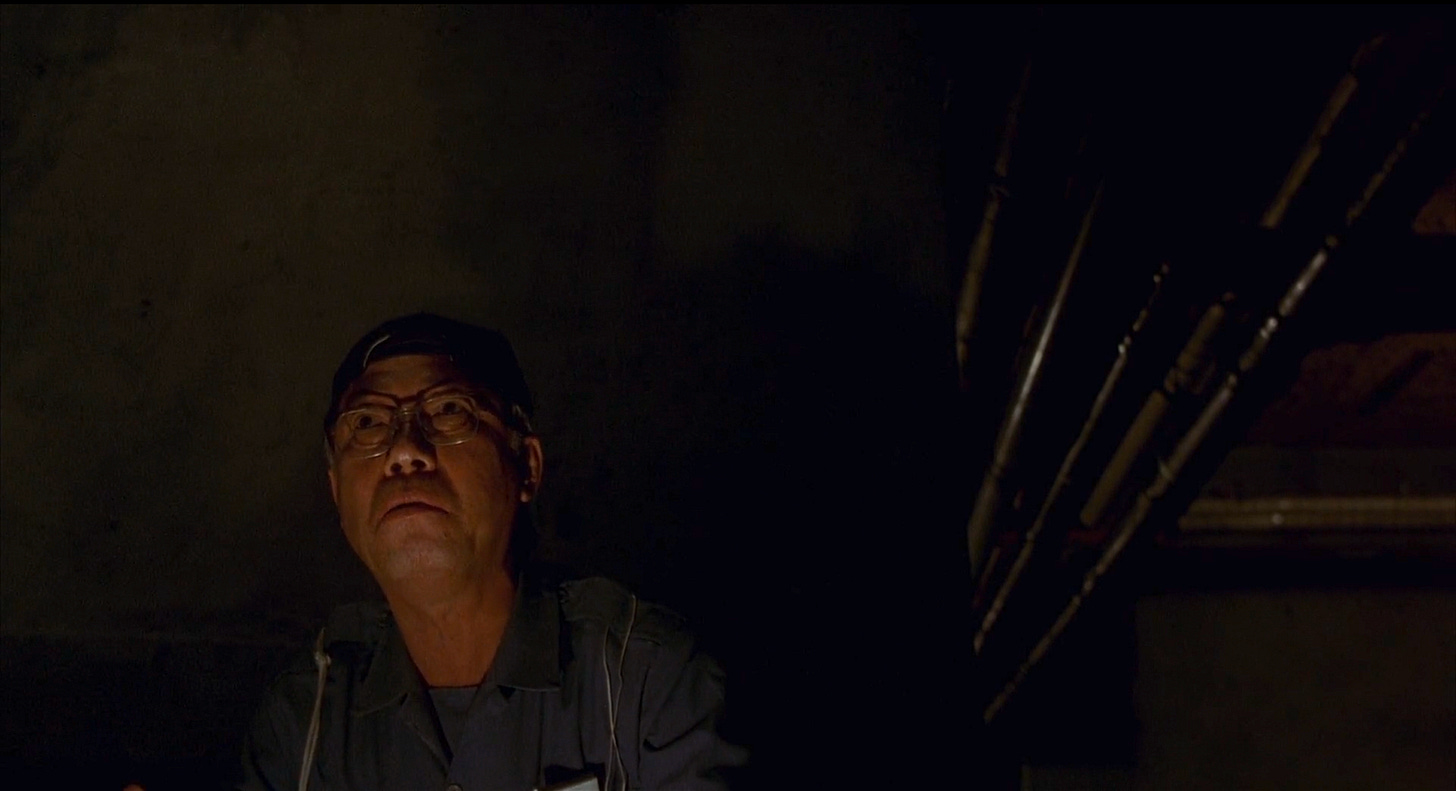Week 71 posts on Better Call Saul (2015-2022); Gerald’s Game (2017); Big Mood (2024-present); Stage Fright (1950); and a comparison of two creepy tales in Barking Dogs Never Bite (2000) and The Fog (1980)
Better Call Saul
Absolutely exquisite framing in the Better Call Saul finale “Saul Gone”
Kim visits the courtroom to hear Jimmy's testimony, entirely unsure whether she will speak to him again, let alone forgive him. To reflect this she's literally framed by an exit sign; she can see her path out, while we can see she's not taking it . . . yet.
Gerald’s Game
Gerald's Game uses audio and visual shifts in quick succession to transition us from one scene to another.
The radio playing over the boat engine and water noises doesn't feel incongruent; it makes sense to blast a radio in an open-air boat.
The audio abruptly shifts on the cut; less scratchy and loud, as someone would listen in a backyard, over visuals of Jessie on a bench with a radio in the foreground. The radio being in focus signals while the broadcast *could* have been diegetic ('within the scene') on the boat, it clearly is diegetic here.
A hand reaches in to turn the radio knob; as it shifts through static and music (moving almost as though the radio knob were pulling focus) the visual racks to Jessie. This reverses what a typical scene may do; it's more conventional to rack from the person listening to the hand tuning the knob. But the point of this scene is Jessie.
These audio and visual shifts aren't just for flair, they set up a dynamic shift in tone - from 'mom goes adventuring on a boat!' to a fraught scene in an abandoned yard.
Big Mood
Big Mood says a lot with this cut. The concept is simple: keep Maggie (Nicola Coughlan) in place and change everything about the frame.
Maggie lies down, the music starts distorting, she takes a deep breath in . . . and on exhale, everything has changed; the set, wardrobe, makeup, no more music, blue-washed light instead of warm tones.
It's instantly clear it's been a minute, and Maggie is not in a good place.
Stage Fright
Much to love about this mini-chase from #Hitchcock's STAGE FRIGHT (1950).
For example, how it goes from wide to a close hemmed-in angle at 0:11 so we feel trapped along with Cooper.
But my favourite is the joke at 0:20, an ECU of a symbol we may have missed in the medium shot: SAFETY GLASS right under where the cop is banging.
Along with those words are symbols looking like what Cooper's gonna end up with: a broken heart.
Barking Dogs Never Bite / The Fog
What do these two stills from Barking Dogs Never Bite (2000) and The Fog (1980) have in common?
The janitor is part of a folk horror tale, and the sea captain is telling a ghost story. Both are seen from a slight low angle, off-centered and surrounded by darkness.
But most importantly they are *lit* from below, the janitor with a small portable light and the sea captain with a campfire.
All this gives them both an eeriness, so even though nothing 'happens' in the scene, we are very much as uneasy as their in-movie audience.






